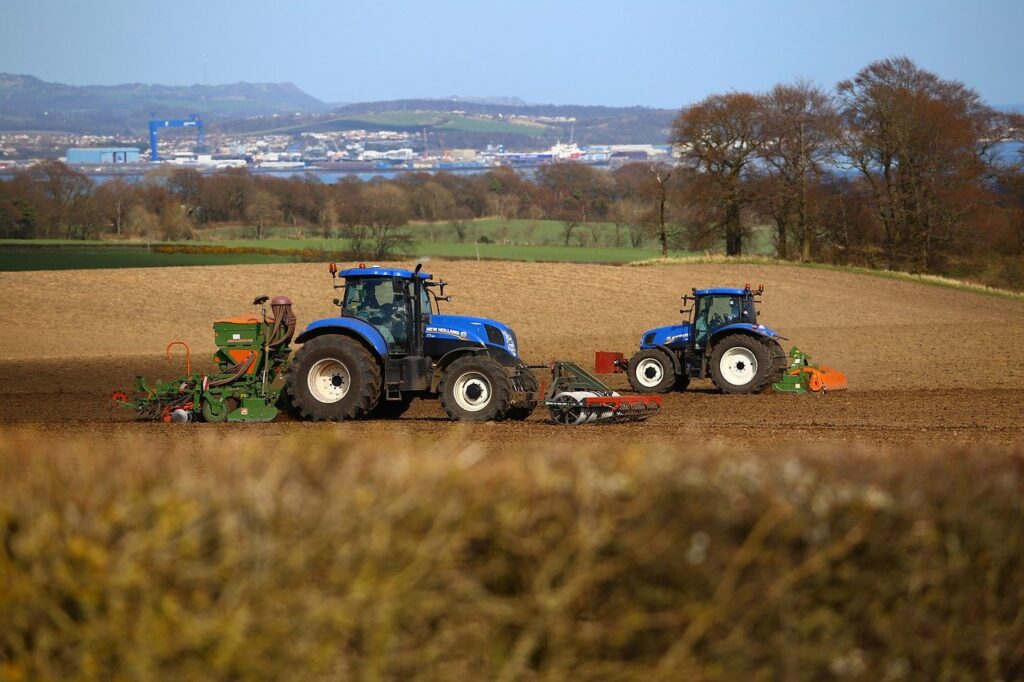
Creating effective food plots for deer is a key strategy in wildlife management and hunting success. The method you choose to plant your food plots can significantly influence their productivity and sustainability. In this comprehensive guide, we’ll explore three popular methods: broadcasting, no-till, and seed drilling. We’ll delve into the pros and cons of each method and provide step-by-step instructions to help you implement them effectively.
Broadcasting
Broadcasting is the process of scattering seeds evenly over the soil surface. This traditional method is widely used due to its simplicity and cost-effectiveness.
Pros of Broadcasting
- Ease of Use: Broadcasting seeds is straightforward and does not require advanced equipment.
- Cost-Effective: It minimizes expenses related to machinery and labor.
- Time-Efficient: This method is quick, allowing you to cover large areas in a short time.
Cons of Broadcasting
- Seed-Soil Contact: Achieving optimal seed-soil contact can be challenging, leading to lower germination rates.
- Predation and Wastage: Seeds are more exposed to birds and rodents.
- Weed Competition: Without proper soil preparation, seeds face significant competition from weeds.
Step-by-Step Instructions for Broadcasting
- Site Selection and Preparation:
- Choose a well-drained site with good sunlight exposure.
- Mow existing vegetation to a low height.
- Apply a non-selective herbicide to kill any remaining vegetation.
- Soil Testing and Amendments:
- Conduct a soil test to determine pH and nutrient levels.
- Apply lime and fertilizer as recommended by the soil test results.
- Seed Selection:
- Choose seeds suited to your local climate and soil conditions. Common choices include clover, chicory, and brassicas.
- Seed Broadcasting:
- Use a hand-held spreader or broadcast spreader to evenly distribute seeds over the soil surface.
- For small plots, you can also broadcast seeds by hand.
- Seed Coverage:
- Lightly rake or drag the soil to cover the seeds with a thin layer of soil.
- Alternatively, use a cultipacker to press the seeds into the soil.
- Watering and Maintenance:
- Water the plot if rainfall is insufficient to ensure seed germination.
- Monitor for weeds and apply selective herbicides if necessary.
No-Till Planting
No-till planting involves sowing seeds directly into undisturbed soil. This method helps preserve soil structure and moisture, promoting sustainable land management.
Pros of No-Till Planting
- Soil Health: Enhances soil structure and microbial activity.
- Moisture Retention: Undisturbed soil retains moisture better.
- Erosion Control: Minimizes soil erosion by keeping the soil intact.
Cons of No-Till Planting
- Initial Weed Pressure: Existing weeds can compete with new seedlings.
- Equipment Costs: Requires specific no-till planters or drills.
- Learning Curve: Requires adjustment to local conditions and mastering the technique.
Step-by-Step Instructions for No-Till Planting
- Site Selection and Preparation:
- Choose a location with minimal slope to reduce erosion risks.
- Mow existing vegetation to create a manageable surface.
- Herbicide Application:
- Apply a non-selective herbicide to kill existing vegetation.
- Allow time for the herbicide to work, usually 1-2 weeks.
- Soil Testing and Amendments:
- Conduct a soil test and amend the soil based on the results.
- Apply lime and fertilizer as needed without disturbing the soil.
- Seed Selection:
- Choose seeds that perform well in no-till systems. Perennial forages like clover and alfalfa are excellent choices.
- Seeding Process:
- Use a no-till planter or drill to plant seeds at the recommended depth.
- Ensure even seed distribution and proper spacing.
- Post-Planting Care:
- Monitor the plot for weed growth and apply selective herbicides if necessary.
- Water the plot during dry periods to ensure seed germination and growth.
Seed Drilling
Seed drilling involves using a drill to place seeds at a precise depth in the soil. This method is known for its efficiency and high germination rates.
Pros of Seed Drilling
- Precision Planting: Ensures seeds are placed at optimal depths for better germination.
- Reduced Seed Waste: Minimizes seed wastage and protects seeds from predation.
- Uniform Growth: Leads to uniform crop stands and better weed suppression.
Cons of Seed Drilling
- Equipment Costs: Seed drills are expensive and require a significant investment.
- Skill Requirement: Requires expertise to operate the seed drill effectively.
- Soil Compaction: Heavy machinery can cause soil compaction over time.
Step-by-Step Instructions for Seed Drilling
- Site Selection and Preparation:
- Select a well-drained site with good sunlight exposure.
- Mow existing vegetation and remove debris from the field.
- Soil Testing and Amendments:
- Conduct a soil test and amend the soil according to the results.
- Apply lime and fertilizer as needed to prepare the seedbed.
- Seed Selection:
- Choose seeds suited to your local conditions and the intended forage for deer. Popular choices include soybeans, corn, and legumes.
- Drill Calibration:
- Calibrate the seed drill to ensure it plants seeds at the correct depth and spacing.
- Follow the manufacturer’s instructions for calibration settings.
- Seeding Process:
- Use the seed drill to plant seeds in straight rows, ensuring even distribution.
- Check the drill periodically to ensure proper operation and adjust settings if necessary.
- Post-Planting Care:
- Monitor the plot for signs of pests and diseases.
- Water the plot as needed to support seed germination and early growth.
- Apply fertilizers as recommended to promote healthy plant development.
Comparing the Methods
Cost and Equipment
- Broadcasting: Least expensive, minimal equipment required.
- No-Till: Moderate cost, requires no-till planters or specialized equipment.
- Seed Drilling: Highest cost due to the need for a seed drill.
Soil Health and Erosion
- Broadcasting: May lead to erosion if the soil is not stabilized.
- No-Till: Excellent for soil health and erosion control.
- Seed Drilling: Good for soil health but can cause compaction if overused.
Efficiency and Seed Utilization
- Broadcasting: Lower germination rates, higher seed wastage.
- No-Till: Moderate efficiency, better seed utilization with proper techniques.
- Seed Drilling: High efficiency, optimal seed utilization.
Labor and Time
- Broadcasting: Quick and easy, minimal labor.
- No-Till: Moderate labor, time-consuming initial setup.
- Seed Drilling: Labor-intensive, requires time for proper setup and operation.
Conclusion
Choosing the right planting method for your deer food plots depends on various factors, including budget, available equipment, soil health, and personal preferences. Broadcasting is ideal for those seeking a cost-effective and quick solution. No-till planting offers long-term soil health benefits and is suitable for environmentally conscious land managers. Seed drilling provides precision and efficiency but requires a significant investment in equipment and labor.
By understanding the pros and cons of each method and following the step-by-step instructions provided, you can make informed decisions that align with your goals and resources. This ensures a successful and sustainable food plot that attracts and sustains healthy deer populations.
References
- Whitetail Habitat Solutions: Easy No-Till Food Plot Methods
- Deer Creek Seed: Food Plots for Pros
- DeerBuilder: Deep Woods Food Plots
- Field & Stream: Ultimate No-Till Food Plot
- NRCS: Planting Methods Guide
- Growing Deer TV: Broadcasting Seed into Small Hidey Hole Food Plots
- Growing Deer TV: Broadcasting Seed Without Dragging or Disking
